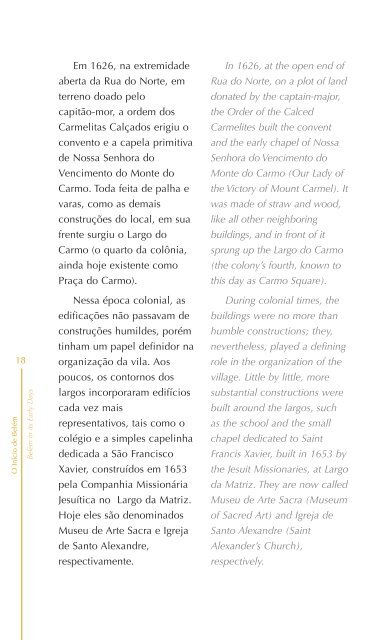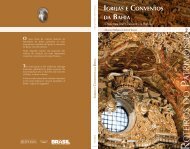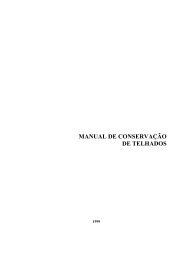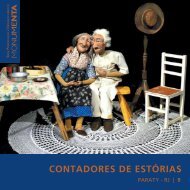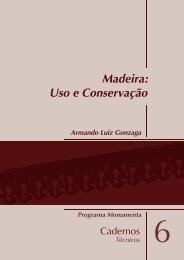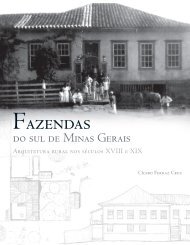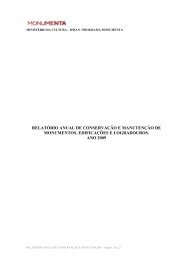LARGOS, CORETOS E PRAÇAS DE BELÉM - Monumenta
LARGOS, CORETOS E PRAÇAS DE BELÉM - Monumenta
LARGOS, CORETOS E PRAÇAS DE BELÉM - Monumenta
Create successful ePaper yourself
Turn your PDF publications into a flip-book with our unique Google optimized e-Paper software.
O Início de Belém<br />
18<br />
Belém in its Early Days<br />
Em 1626, na extremidade<br />
aberta da Rua do Norte, em<br />
terreno doado pelo<br />
capitão-mor, a ordem dos<br />
Carmelitas Calçados erigiu o<br />
convento e a capela primitiva<br />
de Nossa Senhora do<br />
Vencimento do Monte do<br />
Carmo. Toda feita de palha e<br />
varas, como as demais<br />
construções do local, em sua<br />
frente surgiu o Largo do<br />
Carmo (o quarto da colônia,<br />
ainda hoje existente como<br />
Praça do Carmo).<br />
Nessa época colonial, as<br />
edificações não passavam de<br />
construções humildes, porém<br />
tinham um papel definidor na<br />
organização da vila. Aos<br />
poucos, os contornos dos<br />
largos incorporaram edifícios<br />
cada vez mais<br />
representativos, tais como o<br />
colégio e a simples capelinha<br />
dedicada a São Francisco<br />
Xavier, construídos em 1653<br />
pela Companhia Missionária<br />
Jesuítica no Largo da Matriz.<br />
Hoje eles são denominados<br />
Museu de Arte Sacra e Igreja<br />
de Santo Alexandre,<br />
respectivamente.<br />
In 1626, at the open end of<br />
Rua do Norte, on a plot of land<br />
donated by the captain-major,<br />
the Order of the Calced<br />
Carmelites built the convent<br />
and the early chapel of Nossa<br />
Senhora do Vencimento do<br />
Monte do Carmo (Our Lady of<br />
the Victory of Mount Carmel). It<br />
was made of straw and wood,<br />
like all other neighboring<br />
buildings, and in front of it<br />
sprung up the Largo do Carmo<br />
(the colony’s fourth, known to<br />
this day as Carmo Square).<br />
During colonial times, the<br />
buildings were no more than<br />
humble constructions; they,<br />
nevertheless, played a defining<br />
role in the organization of the<br />
village. Little by little, more<br />
substantial constructions were<br />
built around the largos, such<br />
as the school and the small<br />
chapel dedicated to Saint<br />
Francis Xavier, built in 1653 by<br />
the Jesuit Missionaries, at Largo<br />
da Matriz. They are now called<br />
Museu de Arte Sacra (Museum<br />
of Sacred Art) and Igreja de<br />
Santo Alexandre (Saint<br />
Alexander’s Church),<br />
respectively.


